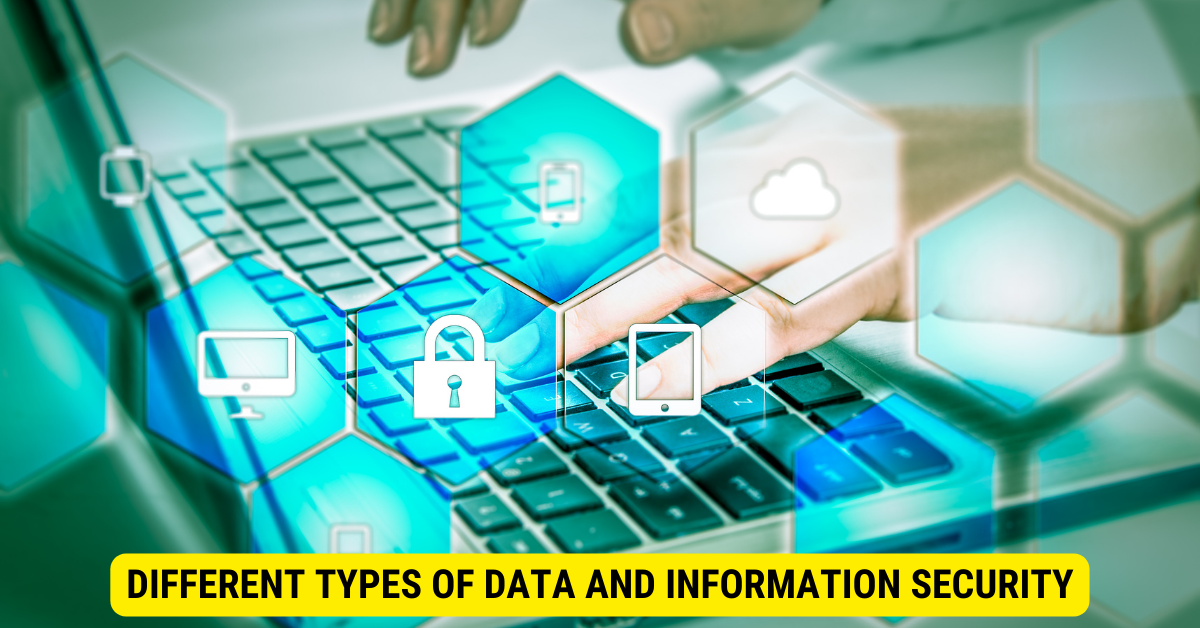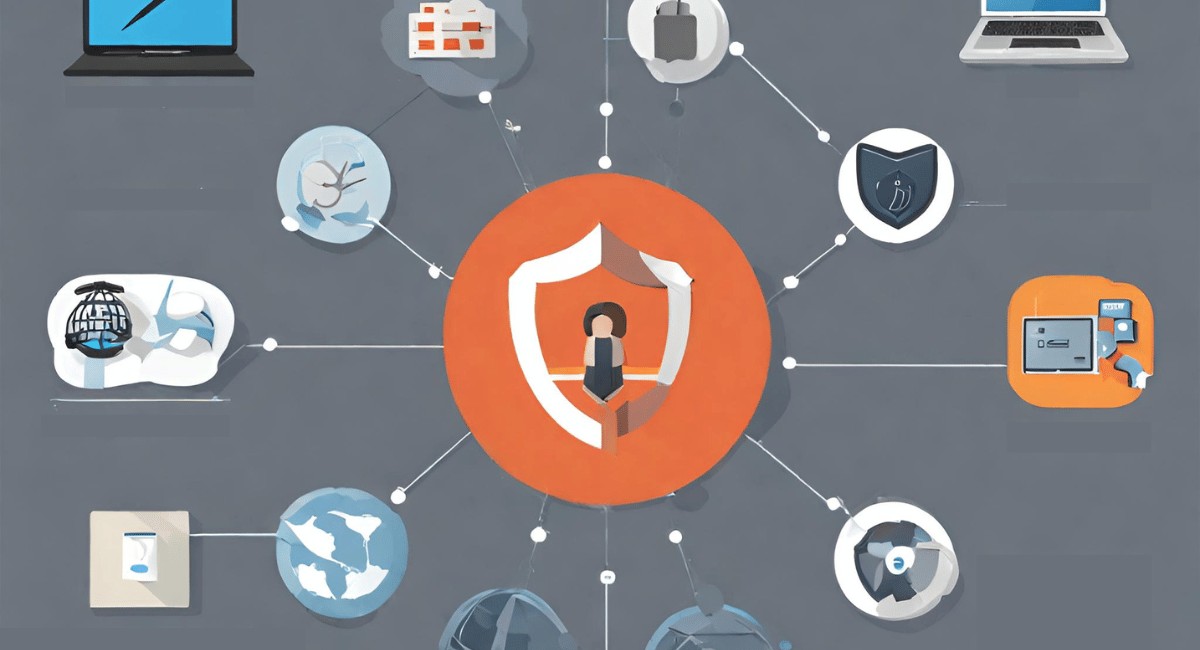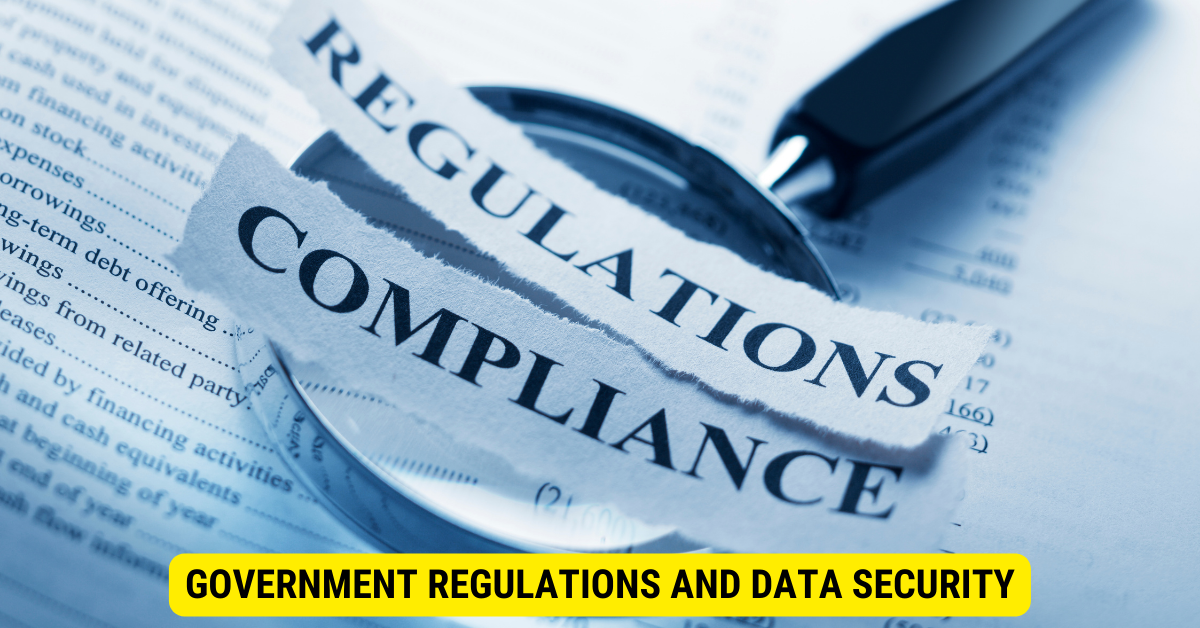The ultimate responsibility for the security of data and information often lies with an organization’s leadership, everyone involved, from it professionals to end-users, plays a role in ensuring data and information security.
In today’s information-driven era, data and information security have become paramount. As we delve deeper into understanding the responsibilities behind data security, it’s crucial to acknowledge that the duty doesn’t fall on a single entity but spans individuals, corporations, professionals, governments, and even machines.
Understanding the Importance of Data Security
Data security is of utmost importance in the digital age. Technological advancements have led us to a point where virtually all our crucial business transactions, communications, and personal life management occur via digital channels. Thus, making the security of these digital information pieces essential.
Moreover, the recent surge in cybercrime incidents has stirred concern among individuals, corporations, and government entities. These cyber-attacks often seek to exploit security vulnerabilities in a system to compromise and steal data, leading to catastrophic consequences.
As we rely heavily on digital platforms, exploring the various aspects of data security and its significance in protecting sensitive information becomes crucial.
The Role of Data in Modern Business
Data plays a crucial role in modern businesses, from enhancing customer experience to analyzing market trends, decision-making, product development, internal communication, and more. It’s not erroneous to state that in the current scenario, businesses thrive on data.
The rise of big data analytics enables businesses to collect and interpret extensive data, facilitating insightful decision-making. By recognizing trends, patterns, and consumer inclinations, they can adapt their offerings to meet evolving customer needs.
Additionally, data-driven decision-making has become a norm in many organizations. By analyzing data, businesses can identify areas for improvement, optimize their operations, and allocate resources effectively. It enables them to stay competitive in today’s fast-paced and dynamic business landscape.
Since data is so integral to business operations, any compromise to security could significantly hinder business continuity, profitability, and reputation. Thus, it further emphasizes the importance of robust data security measures.
The Consequences of Data Breaches
Data breaches can lead to severe and long-lasting effects. For individuals, it could mean unauthorized access to personal and financial information, leading to fraud and identity theft. Simultaneously, corporations could face financial losses, competitive disadvantages, and reputational damage.
Imagine a scenario where a major retail company experiences a data breach, exposing the personal information of millions of customers. Not only would this breach result in financial losses due to potential lawsuits and compensations, but it would also lead to a loss of trust from customers. The company’s reputation could be tarnished, and customers may choose to take their business elsewhere, impacting its long-term sustainability.
Moreover, data breaches can lead to legal repercussions, especially when it involves sensitive information related to customers or clients. Organizations may face penalties and regulatory fines for failing to protect confidential data adequately. The fallout from such incidents can be devastating financially and in terms of public perception.
Companies and individuals must recognize the potential repercussions of data breaches and actively work to protect their information. Adopting strong security strategies like encryption, firewalls, and staff education can greatly diminish the likelihood of data compromises.
Different Types of Data and Information Security

Data security is not confined to safeguarding data on a device or network, but it extends to different domains, and each domain considers different types of threats and vulnerabilities.
When protecting sensitive information, organizations must take a multi-faceted approach. This involves implementing various security measures across different areas to ensure comprehensive data protection.
Physical Security
Physical security involves protecting hardware equipment, storage devices, and physical databases from damage, theft, or intrusion. Simple measures such as access control, secure locks, surveillance cameras, and security personnel contribute to the physical security of data.
For example, access control systems, such as key cards or biometric scanners, ensure that only authorized individuals can enter restricted areas where valuable data is stored. Additionally, surveillance cameras help monitor the physical environment and detect any potential threats or unauthorized access attempts.
Network Security

In network security, the focus is on protecting data when transmitted over networks. Several methods, including firewalls, antivirus software, encryption, and secure Wi-Fi networks, play a pivotal role in keeping data secure during its journey across networks.
Firewalls act as a wall between internal and external networks, filtering out potentially harmful traffic and preventing unauthorized access. Antivirus software scans incoming and outgoing data for malicious software or viruses, ensuring the network remains protected. Encryption, on the other hand, converts data into an unreadable format during transmission, making it nearly impossible for unauthorized individuals to decipher the information.
Computer Security
While physical and network security are essential, computer security safeguards information stored on individual devices. Antivirus and antimalware software, strong password policies, regular system updates, and device encryption enhance computer security.
Implementing strong password policies, such as using complex and unique passwords, adds an extra layer of security to individual devices. Regular system updates ensure that any known vulnerabilities are patched, minimizing the risk of exploitation by attackers. Device encryption, which converts data into an unreadable format, protects the information, even if lost or stolen.
Application Security
Another key area of data security is application security. As most data is accessed and manipulated via various software applications, the security of these applications becomes essential. Measures like regular software updates, patch management, and secure coding practices form the basis of application security.
Regular software updates and patch management help address any known application vulnerabilities, reducing the risk of exploitation. Protected coding practices, such as input validation and user authentication, ensure that applications are built with security in mind from the ground up, minimizing the probability of unauthorized access or data breaches.
Organizations can significantly enhance their data and information security by implementing comprehensive security measures across physical, network, computer, and application domains. It is crucial to stay proactive and continuously adapt to emerging threats to ensure sensitive data’s confidentiality, integrity, and availability.
Key Players in Data and Information Security
Data security isn’t a single-person job but a collective effort that includes several key players.
Ensuring the security of data and information is of paramount importance in today’s digital age. With the increasing prevalence of cyber threats and data breaches, it is crucial to have a robust system in place to protect sensitive information. This involves the cooperation and collaboration of various stakeholders who play a vital role in safeguarding data.
Individual Responsibility for Data Security
Everyone who uses and handles data is primarily responsible for keeping it safe. Individuals must recognize the importance of data security and actively take steps to protect it. This includes being aware of basic security practices, such as securing personal devices with passwords or biometric authentication, maintaining strong passwords, and regularly updating them. It also involves being cautious while sharing sensitive online and offline information and mindful of potential phishing attempts or social engineering tactics.
Furthermore, individuals should stay updated on the latest security threats and educate themselves about best practices for data protection. By taking personal responsibility for data security, individuals contribute to the overall safety of the data ecosystem.
The Role of IT Professionals in Data Security
IT professionals play a crucial role in maintaining data security within organizations. They are responsible for implementing, maintaining, and upgrading security measures to thwart unauthorized access and protect sensitive information. This includes setting up firewalls, encryption protocols, and intrusion detection systems to safeguard data from external threats.
Beyond their technical duties, IT experts also serve an instructional function. They are crucial in educating staff about potential hazards and prevention methods. This can include hosting seminars, developing educational resources, and fostering an environment of cybersecurity consciousness in the company. By providing staff with the essential understanding and tools, IT specialists enable them to safeguard data actively.
Corporate Responsibility for Data Security
Companies themselves also have a significant responsibility to ensure data security. They must establish strong data protection policies that outline guidelines for handling and storing sensitive information. These policies should address access controls, data encryption, secure data transmission, and incident response protocols.
Moreover, organizations must invest in advanced security technologies that detect and mitigate potential threats. This includes deploying robust antivirus software, intrusion prevention systems, and network monitoring tools. Security audits at regular intervals and vulnerability assessments should also be conducted to identify any weaknesses in the system and take appropriate measures to address them.
Furthermore, companies must continually monitor their systems for potential threats and promptly respond to security breaches. They should have a well-defined incident response plan, including containment, investigation, and recovery steps. By taking swift remedial measures, organizations can minimize the impact of a data security breach and protect their reputation.
Ultimately, data security is a collective effort that requires the active participation of individuals, IT professionals, and organizations. By working together and fulfilling their respective roles, these key players can create a secure environment for data and information, safeguarding it from the ever-evolving threats in the digital landscape.
Government Regulations and Data Security

Government regulations play a significant role in ensuring data security. They set the standards that businesses have to follow regarding data protection.
Data security is critical to modern society as we gradually rely on digital technologies to store and transmit sensitive information. Governments worldwide have recognized the importance of safeguarding this data and have implemented various regulations to ensure its protection.
Overview of Data Protection Laws
Many countries have enacted data protection laws to safeguard the privacy and security of individuals’ personal information. These laws outline the rights of individuals regarding their data and establish obligations for organizations that handle such data.
The General Data Protection Regulation (GDPR) is one of the most comprehensive and influential data protection regulations globally. It was implemented by the European Union (EU) in 2018 and applied to all EU member states. The GDPR sets strict guidelines for collecting, processing and storing personal data to give individuals more control over their information and prevent data breaches.
In addition to the GDPR, various countries have data protection laws. For example, the United States has the California Consumer Privacy Act (CCPA), which grants California residents specific rights regarding their data. The Privacy Act governs personal information handling by government agencies and businesses in Australia.
These data protection laws protect individuals’ privacy and advance trust and confidence in the digital economy. By setting clear guidelines and standards, they ensure that organizations handle data responsibly and take appropriate measures to secure it.
How Governments Enforce Data Security?
Governments enforce data security through these laws and regulations by implementing penalties for non-compliance. The strictness of these penalties varies depending on the jurisdiction and the nature of the violation.
In addition to penalties, governments also play a proactive role in promoting data security. They conduct awareness drives to educate folks and organizations about the importance of data protection and the potential risks associated with data breaches.
Furthermore, governments often collaborate with industry experts and cybersecurity organizations to develop best practices and guidelines for sectors that handle sensitive data. These guidelines help organizations implement robust security measures to stay up-to-date with the evolving threat landscape.
Cyber hygiene practices, such as regular software updates, strong password policies, and employee training, are also encouraged by governments to enhance data security. By promoting these practices, governments aim to create a culture of cybersecurity awareness and resilience.
Overall, government regulations and enforcement mechanisms are crucial in ensuring data security. They provide a framework for organizations to follow, promote awareness and best practices, and hold accountable those who fail to protect individuals’ data. By prioritizing data security, governments aim to create a safer and more trustworthy digital environment for individuals and businesses.
Key Takeaways
- Organizational leadership is ultimately responsible for data security.
- IT departments manage and implement security infrastructure.
- Employees and end-users must adhere to security protocols.
- Third-party providers should also maintain security standards.
- Continuous education and training are crucial to keep all stakeholders informed.
FAQs
Q: Who holds the ultimate responsibility for organizational data security?
A: The organization’s leadership or executive team typically holds ultimate responsibility.
Q: What role do IT departments play in data security?
A: They design, implement, and monitor security measures and infrastructure.
Q: Are employees accountable for data security?
A: Employees should follow security protocols and report potential breaches or vulnerabilities.
Conclusion
Data security is a collective effort. While the organization’s leadership bears primary responsibility, IT professionals are essential in enforcing security protocols. All individuals, including employees and end-users, must adhere to these measures. Third-party providers are also expected to maintain security, and ongoing education is crucial. Government regulations further underscore the shared responsibility for data protection.
